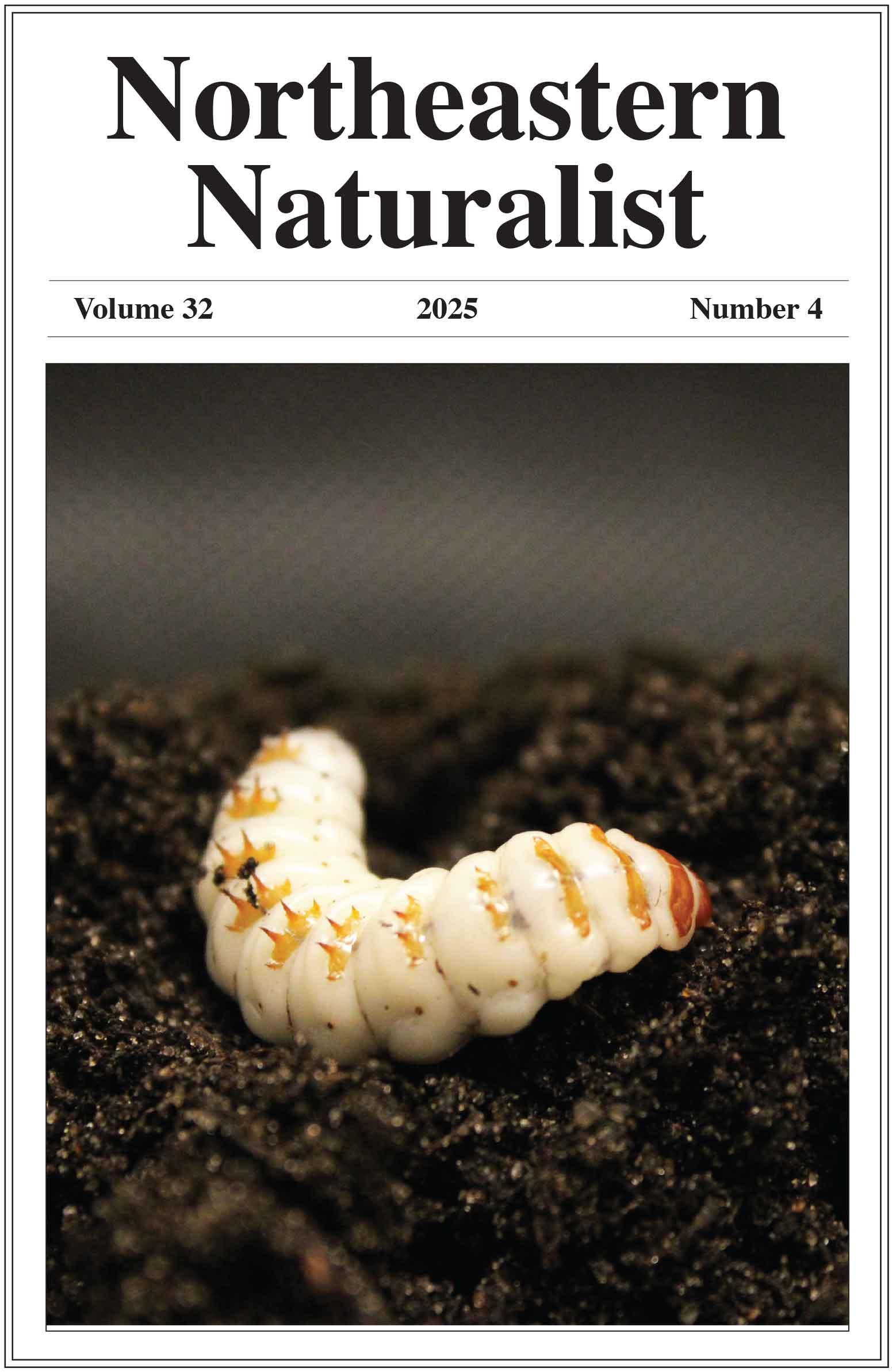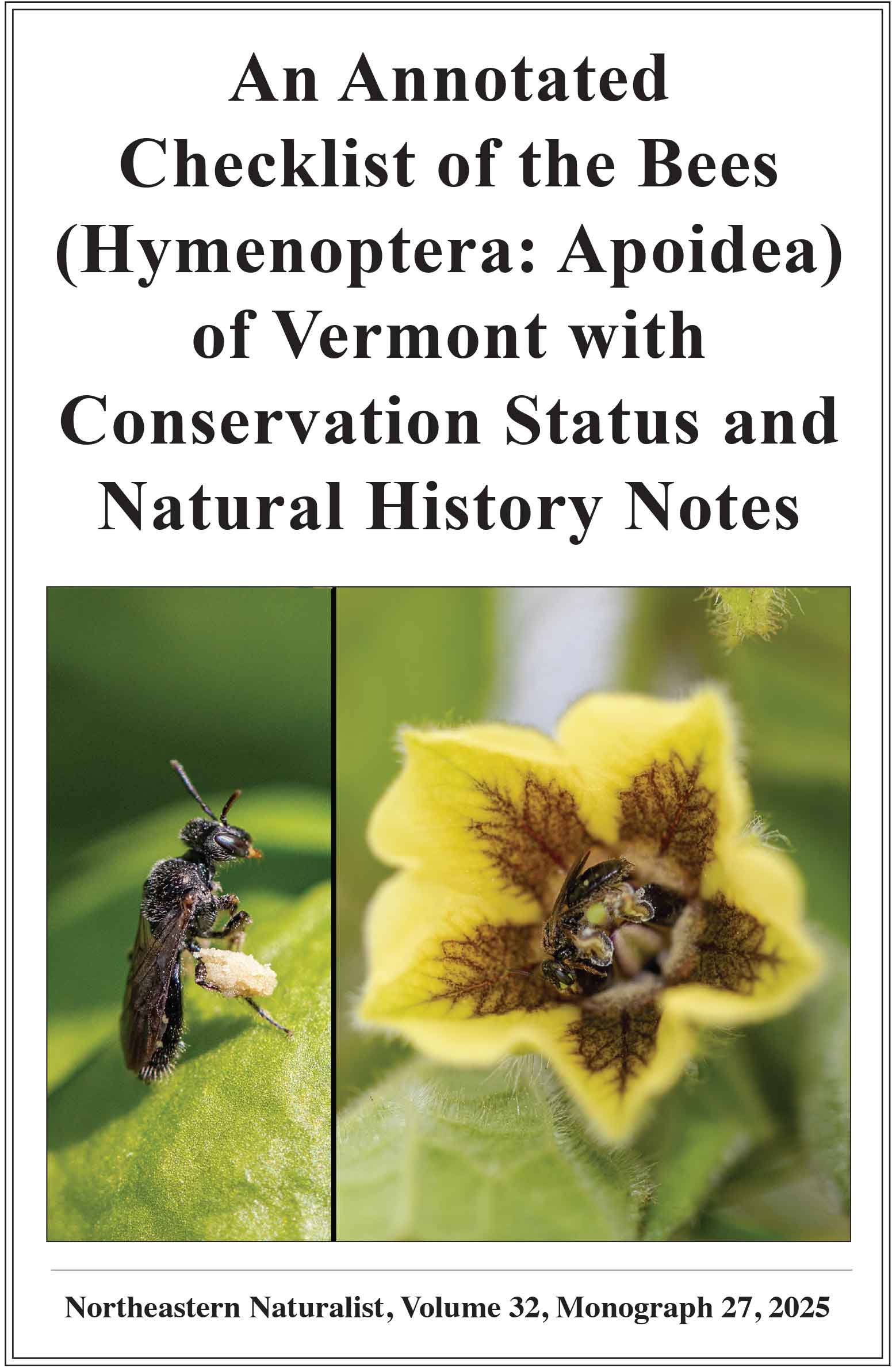Under-ice Behavior of Spotted Turtles (Clemmys guttata) Late in the Overwintering Period
Peter B. Mills1,*, Lyndsey N. Friesen1, and Jacqueline D. Litzgus2
1Ontario Parks, Algonquin Zone, Huntsville, ON P1H-2J4, Canada. 2School of Natural Sciences, Laurentian University, Sudbury, ON P3E 2C6, Canada. *Corresponding author.
Northeastern Naturalist, Volume 31, Special Issue 12: C27–C31
First published early online: 19 July 2024
Abstract
In temperate climates, freshwater turtles have to contend with the challenges of hypoxic or anoxic conditions that prevail in ice-covered wetlands during the winter months. Here we describe behavior indicating that Clemmys guttata (Spotted Turtle) make small adjustments to their position late in the overwintering period. We speculate that these movements facilitate access to higher concentrations of dissolved oxygen near the water’s surface, and also to the first available aerial oxygen once ice-cover has melted. This access to oxygen in early spring would help eliminate the consequences of acidosis generated over the winter when long-term hypoxia forces turtles to respire using anaerobic pathways.
![]() Download Full-text pdf (Accessible only to subscribers. To subscribe click here.)
Download Full-text pdf (Accessible only to subscribers. To subscribe click here.)
Access Journal Content
Open access browsing of table of contents and abstract pages. Full text pdfs available for download for subscribers.
Issue-in-Progress: Vol. 33(1) ... early view
Check out NENA's latest monograph and Special Issue:













 The Northeastern Naturalist is a peer-reviewed journal that covers all aspects of natural history within northeastern North America. We welcome research articles, summary review papers, and observational notes.
The Northeastern Naturalist is a peer-reviewed journal that covers all aspects of natural history within northeastern North America. We welcome research articles, summary review papers, and observational notes.